Understanding each stage of your pregnancy
While a full-term pregnancy lasts 40 weeks, there are many milestones along the way. Pregnancy is divided into three stages, known as trimesters. Week by week, each stage takes your baby one step closer to delivery. The obstetrician-gynecologists (OBGYNs) at Baylor Scott & White provide comprehensive, compassionate maternity care for every trimester of your pregnancy.
First trimester: Weeks 1 to 12
At your first routine maternal health checkup, your OBGYN will confirm whether you are pregnant and establish your due date. Your OBGYN will provide education to help you make healthy choices for your pregnancy. People with a typical pregnancy will see their OBGYN monthly during the first trimester.
Providers typically measure pregnancy in weeks, starting from the first day of your last menstrual period. Over the first 12 weeks, you release an egg, which is fertilized by sperm and implants in your uterus. The fertilized egg, a single cell, divides many times until it forms an embryo and then, at about 10 weeks, a fetus with facial features and a detectable heartbeat. By week 12, your fetus is about 3 inches long and weighs about an ounce.
Early signs and symptoms
During early pregnancy, you may experience symptoms including:
- Changes in your bathroom habits, such as constipation or needing to go more often
- Exhaustion
- Food cravings or aversions
- Headaches
- Heartburn, nausea or vomiting
- Mood swings
- Tender or swollen breasts
- Weight changes (either losing or gaining weight)
No single sign means you are pregnant. However, if you experience several symptoms together or have missed a period, you may want to take a pregnancy test or come to your OBGYN’s office for testing. If a home pregnancy test confirms pregnancy, make an appointment with your OBGYN right away to get your pregnancy off to a healthy start.
Body changes and development
During the first trimester, you may not look different in the mirror, but your body is going through changes internally. You produce more of the hormone estrogen, which encourages your uterus to begin expanding. Many of the physical symptoms of early pregnancy have to do with these hormonal changes.
Meanwhile, your baby is changing quickly. By the end of the first trimester, your baby has arms, legs and facial features. They are developing internal organs, and their nerves and muscles are developing.
Healthcare and nutrition
Once your pregnancy is confirmed, you don’t need to “eat for two.” You won’t need to increase your food intake until later in your pregnancy. It’s more important to eat a nourishing diet that includes all food groups:
- Dairy, including fortified soy products
- Fruits and vegetables
- Healthy oils
- Lean sources of protein, such as poultry, fish and beans
- Whole grains
Also, take prenatal vitamins that contain choline, folic acid, iodine and iron.
During the first trimester, you’ll begin regular visits with your OBGYN. The first visit will probably include a longer conversation about your health, previous pregnancies and goals for this pregnancy. Your provider may ask about your home life, social support community, work environment and other factors that could influence your pregnancy.
If you have a new provider, take this time to get to know them and make sure you feel comfortable with them.
Your provider will order tests, including:
- Blood type and Rh factor
- Complete blood count
- Pregnancy test if your pregnancy is not yet confirmed
- Tests for infectious diseases, including rubella, hepatitis B and C, HIV and other sexually transmitted infections
- Urinalysis with urine culture and toxicology
Emotional well-being
During your first trimester, you may experience a variety of emotions. Your provider can suggest coping strategies, such as exercise and meditation. If you used medication such as antidepressants before pregnancy, talk with your provider about safe options to support your continued emotional well-being.
Second trimester: Weeks 13 to 28
In the second trimester, you will continue to visit your OBGYN each month unless you need extra care. Your OBGYN will provide other tests you may need to keep you and your baby healthy. For instance, a diabetes test may influence their guidance for nutritious eating throughout pregnancy. Your OBGYN may also recommend that you receive certain vaccinations.
During this second stage of pregnancy, your baby develops rapidly. By week 28, your baby is about a foot long and may weigh up to 1.5 pounds. Their bones begin to harden, make blood cells, and move.
Growth and development
You and your baby are both growing during the second trimester. Your baby’s skeleton and organs continue to develop. They have sleep and wake cycles. At around week 22, many people can feel their baby moving.
Your body will also continue to change. Your belly expands as your uterus grows to accommodate your baby. Your blood volume increases, as does the amount of blood your heart pumps, known as your cardiac output. In other words, your body is working hard.
Health and nutrition
You should start eating more to accommodate your body’s needs and your baby’s growth. Choose foods high in iron and calcium, and drink plenty of liquids, especially water, to stay hydrated.
You’ll continue having regular checkups with your OBGYN. Your provider will tell you how often they need to see you based on your health and any risk factors you may have. During the second trimester, you’ll receive a glucose test for gestational diabetes, as well as screening for group B streptococcus, an infection that could pass to your baby during birth and make them sick.
Comfort and well-being
At this stage of your pregnancy, you can look forward to possible relief from the nausea and vomiting that you may have experienced during the first trimester. However, it's normal to experience aches in your back, belly or thighs and swelling in your hands, face or feet.
Although you may not feel like moving as much as you did before pregnancy, it's important to stay active throughout your pregnancy. Talk with your provider about modifying your current exercise routine to stay comfortable and keep yourself and your baby healthy.
Preparing for baby
During the second trimester, some expectant parents may begin to think about baby names, decorate the baby’s nursery or sleeping area, and purchase diapers and other items for the baby.
You may also want to think through your childbirth experience. What will labor be like? Who do you want with you? People giving birth for the first time—and those who want a refresher—may consider prenatal classes to prepare for childbirth. We also have online educational resources that may be helpful for you and your partner.
Third trimester: Weeks 29 to 40
Generally, checkups occur every two 2-3 weeks from week 28 through week 36, then weekly until your baby arrives. During these visits, your OBGYN will continue to monitor your baby’s health. They’ll discuss your birth plans with you and may offer resources such as childbirth and parenting classes, lactation consultation, and other services for you and your baby.
During the third trimester of pregnancy, your baby finishes growing and even begins to add fat. A full-term infant generally arrives between 39 and 40 weeks. Full-term babies may weigh between 6 and 9 pounds and be around 19 to 21 inches long.
Final development stages
During the third trimester, your baby prepares for birth. Their lungs and other organs finish developing, and their bones continue to harden. They may turn their head down in preparation for childbirth.
Your body also changes as you gain more weight and experience the baby settling lower into your pelvis or “dropping.” You may begin to feel heaviness in your breasts and even leak a few drops of colostrum, a watery, milk-like substance.
Health and safety
In the third trimester, you may need to increase your food intake again. Be sure to focus on nutritious foods and drink plenty of water. You should be drinking eight to 12 cups of water every day.
During the final weeks of your pregnancy, you may experience Braxton Hicks contractions, also known as “false labor,” as your uterus occasionally contracts. You can tell the difference between Braxton Hicks contractions and true labor because false labor contractions are irregular and will eventually taper off or go away if you change activities. True labor pains come regularly and become more frequent as time goes on.
Always call your provider if you are unsure what kind of contractions you are experiencing.
Birth preparation
If you haven’t already, your third trimester is time to create a birth plan, including choosing a birthing location and discussing pain management options with your OBGYN.
Babies can arrive unexpectedly. Pack your hospital bag, including essentials such as a hygiene kit, a book to read and any medications you take. Remember that your pregnancy clothes will fit you better than your pre-pregnancy clothes for a while after you give birth. For your baby, pack plenty of diapers and comfortable, layered clothes.
If you plan to take your baby home by car, ensure you have a National Child Passenger Safety Board-approved car seat ready in your vehicle, embracing your new journey with confidence and safety.
Emotional and mental health
You may feel anxious and excited about your upcoming labor and delivery. If this is your first baby, you may feel nervous about parenting skills. Concerns about work, finances and other health issues can add to the natural anticipation surrounding childbirth.
Remember that you’re stronger with a community around you. Think about family and friends who may help form a supportive network. You may also want to ask your OBGYN about additional support resources.
Fourth trimester: After baby arrives
Many people describe the 12 weeks after birth as the fourth trimester of pregnancy. During this postpartum phase, your body continues to change as you recover from childbirth and many of the physical changes of pregnancy reverse.
Postpartum visits will occur, at minimum, within three weeks after birth and again at six weeks. Your OBGYN will check that you’re healing physically and monitor your mental well-being. Your OBGYN will also provide contraceptive guidance if you want it. If you experienced high blood pressure or gestational diabetes when you were pregnant, your OBGYN may perform a risk assessment and help you coordinate care for these conditions.
Moms who deliver at BSWH have access to Virtual Postpartum Care for comprehensive support during those first six months after delivery. You can speak directly to a Nurse Care Advocate for personalized guidance and access specialists for lactation support and pelvic floor therapy – all through convenient virtual services.
Healthcare after delivery
Your baby will have their first visit with a pediatrician during their first week of life. You should also keep in touch with your OBGYN to discuss concerns about your health and attend postpartum checkups as scheduled to help ensure a good recovery.
You may experience pain from tearing during a vaginal birth or from a cesarean section. Some women develop hemorrhoids after delivery, as well. Call your OBGYN if your pain does not go away in a few weeks.
Also, watch for symptoms of high blood pressure or postpartum preeclampsia, which could include:
- Bad headaches
- Blurry vision, sensitivity to light, temporary vision loss or other vision changes
- Pain under your ribs, usually on the right side
- Nausea and vomiting
- Shortness of breath
- Urinating less than you normally do
Emotional and mental health
You may feel sad or overwhelmed as you adjust to life with your new baby. Many women experience the “baby blues” for one to two weeks after delivery. But, if your sadness or anxiety continues for longer than that, you may have postpartum depression.
Do not feel ashamed if you are feeling depressed. Many women experience this, and help for postpartum depression is available. Your OBGYN can connect you to treatments and support services that can support you.
Adjusting to breastfeeding
Breastfeeding doesn’t always come as easily as people think it should. Before you leave the hospital with your baby, you may meet with a lactation consultant who can give you tips and advice, but you can find continued support through a Baylor Scott & White breastfeeding support group.
Eating a healthy diet and drinking lots of water will also help your body produce breast milk.
Our pregnancy services
Routine testing is a big part of prenatal care. Your OBGYN will determine which tests you need based on your health history and the results of your prenatal care visits.
Alpha-fetoprotein (AFP) test
An AFP test is performed around 18 weeks into your pregnancy. This test measures AFP levels, a protein found in the baby's liver. The results of this test can tell if the baby has any genetic disorders or birth defects that affect the brain and spine, known as neural tube defects, including spina bifida.
Amniocentesis
An amniocentesis tests your amniotic fluid, the liquid that surrounds and protects your growing baby in the womb. Performed between weeks 15 and 20, amniocentesis looks for signs of Down syndrome or open neural tube defects, such as spina bifida. This type of test is rare.
Ultrasounds
Ultrasounds are noninvasive tests that use sound waves to project an image. You may receive an ultrasound to check for a heartbeat during your first visit. Your baby is tiny at this stage, but ultrasounds at subsequent checkups help determine how quickly your baby grows, if there are multiples (such as twins) and the baby’s sex.
Noninvasive prenatal testing (NIPT)
NIPT is a blood test that typically happens around 11 weeks into the pregnancy. It analyzes the baby's DNA to screen for abnormalities or genetic defects, such as Down syndrome. This test was developed to replace chorionic villus sampling.
Glucose (blood sugar) screening
Glucose screenings can tell your doctor if you have or are at risk for gestational diabetes. The test is typically performed between 24 and 28 weeks unless urine samples show high blood sugar levels before then.
Rh factor
This blood test tells your doctor if you and your partner have Rh factor, a protein in red blood cells. If one of you does and one does not, you are considered Rh incompatible. In some cases, Rh incompatibility can increase certain risks, and the tests will help your OBGYN guide treatment decisions during pregnancy.
Find a location near you
You can find comprehensive pregnancy care at Baylor Scott & White locations throughout North and Central Texas.

Baylor Scott & White All Saints Medical Center - Fort Worth
1400 8th Ave , Fort Worth, TX, 76104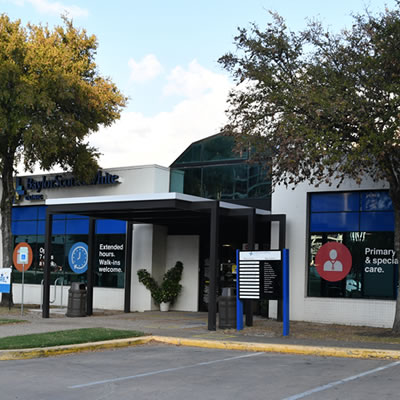
Baylor Scott & White Clinic - Austin North Burnet
2608 Brockton Dr , Austin, TX, 78758- Monday: 8:00 am - 5:00 pm
- Tuesday: 8:00 am - 5:00 pm
- Wednesday: 8:00 am - 5:00 pm
- Thursday: 8:00 am - 5:00 pm
- Friday: 8:00 am - 5:00 pm

Baylor Scott & White Clinic - Brenham Hwy 290
604 US 290 , Brenham, TX, 77833- Monday: 7:00 am - 5:00 pm
- Tuesday: 7:00 am - 5:00 pm
- Wednesday: 7:00 am - 5:00 pm
- Thursday: 7:00 am - 7:00 pm
- Friday: 7:00 am - 5:00 pm
- Saturday: 8:00 am - 12:00 pm

Baylor Scott & White Clinic - Cedar Park
910 E Whitestone Blvd , Cedar Park, TX, 78613- Monday: 8:00 am - 5:00 pm
- Tuesday: 8:00 am - 5:00 pm
- Wednesday: 8:00 am - 5:00 pm
- Thursday: 8:00 am - 5:00 pm
- Friday: 8:00 am - 5:00 pm
- Monday: 7:00 am - 5:00 pm
- Tuesday: 7:00 am - 5:00 pm
- Wednesday: 7:00 am - 5:00 pm
- Thursday: 7:00 am - 5:00 pm
- Friday: 7:00 am - 5:00 pm
- Saturday: 9:00 am - 2:00 pm
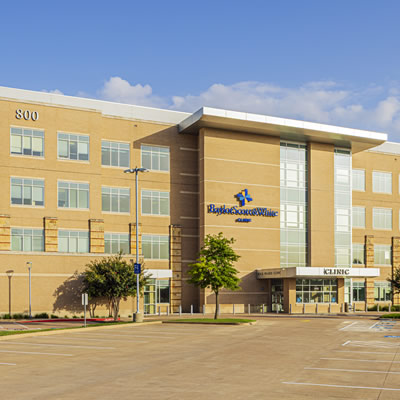
Baylor Scott & White Clinic - College Station Rock Prairie
800 Scott and White Dr , College Station, TX, 77845- Monday: 7:30 am - 5:00 pm
- Tuesday: 7:30 am - 5:00 pm
- Wednesday: 7:30 am - 5:00 pm
- Thursday: 7:30 am - 5:00 pm
- Friday: 7:30 am - 5:00 pm
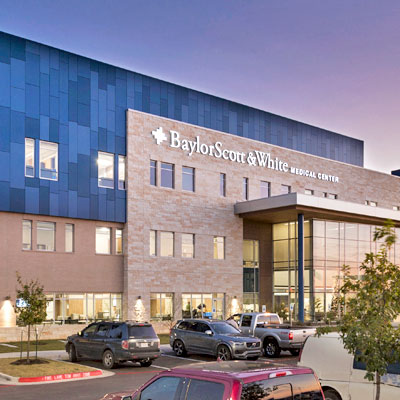
Baylor Scott & White Clinic - Pflugerville Medical Center
2600 E Pflugerville Pkwy Ste 200, Pflugerville, TX, 78660- Monday: 8:00 am - 5:00 pm
- Tuesday: 8:00 am - 5:00 pm
- Wednesday: 8:00 am - 5:00 pm
- Thursday: 8:00 am - 5:00 pm
- Friday: 8:00 am - 5:00 pm
- Monday: 7:30 am - 4:00 pm
- Tuesday: 7:30 am - 4:00 pm
- Wednesday: 7:30 am - 4:00 pm
- Thursday: 7:30 am - 4:00 pm
- Friday: 7:30 am - 4:00 pm
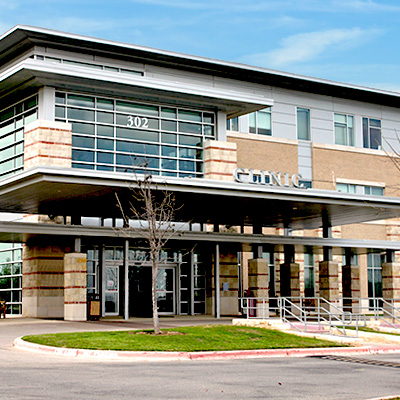
Baylor Scott & White Clinic - Round Rock 302 University
302 University Blvd , Round Rock, TX, 78665- Monday: 8:00 am - 5:00 pm
- Tuesday: 8:00 am - 5:00 pm
- Wednesday: 8:00 am - 5:00 pm
- Thursday: 8:00 am - 5:00 pm
- Friday: 8:00 am - 5:00 pm
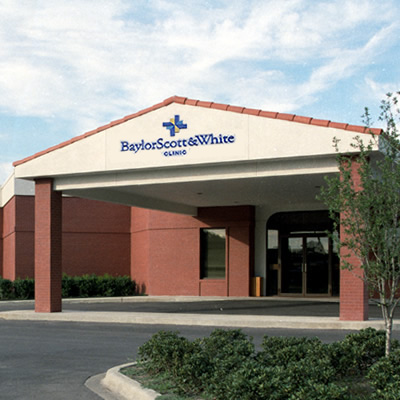
Baylor Scott & White Clinic - Santa Fe
1402 W Ave H , Temple, TX, 76504- Monday: 8:00 am - 5:00 pm
- Tuesday: 8:00 am - 5:00 pm
- Wednesday: 8:00 am - 5:00 pm
- Thursday: 8:00 am - 5:00 pm
- Friday: 8:00 am - 5:00 pm
- Monday: 7:00 am - 4:30 pm
- Tuesday: 7:00 am - 4:30 pm
- Wednesday: 7:00 am - 4:30 pm
- Thursday: 7:00 am - 4:30 pm
- Friday: 7:00 am - 4:30 pm
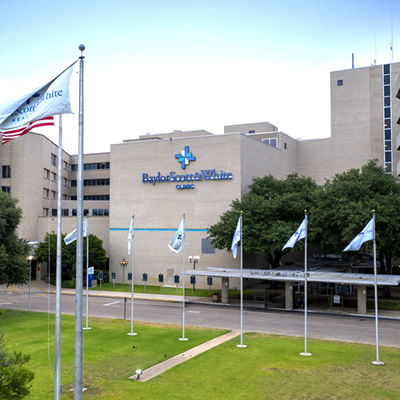
Baylor Scott & White Clinic - Temple
2401 S 31st St , Temple, TX, 76508- Monday: 8:00 am - 5:00 pm
- Tuesday: 8:00 am - 5:00 pm
- Wednesday: 8:00 am - 5:00 pm
- Thursday: 8:00 am - 5:00 pm
- Friday: 8:00 am - 5:00 pm

Baylor Scott & White Clinic - Temple Professional Plaza II
1713 SW H K Dodgen Loop Bldg II, Ste 100, Temple, TX, 76502- Monday: 8:00 am - 6:00 pm
- Tuesday: 8:00 am - 6:00 pm
- Wednesday: 8:00 am - 6:00 pm
- Thursday: 8:00 am - 6:00 pm
- Friday: 8:00 am - 12:00 pm

Baylor Scott & White Medical Center - Austin
5245 W US Hwy 290 Service Rd , Austin, TX, 78735
Baylor Scott & White Medical Center - Brenham
700 Medical Pkwy , Brenham, TX, 77833
Baylor Scott & White Medical Center - Buda
5330 Overpass Rd , Buda, TX, 78610
Baylor Scott & White Medical Center - Centennial
12505 Lebanon Rd , Frisco, TX, 75035
Baylor Scott & White Medical Center - College Station
700 Scott and White Dr , College Station, TX, 77845
Baylor Scott & White Medical Center - Frisco
5601 Warren Pkwy , Frisco, TX, 75034
Baylor Scott & White Medical Center - Frisco at PGA Parkway
7600 Better Way , Frisco, TX, 75033
Baylor Scott & White Medical Center - Grapevine
1650 W College St , Grapevine, TX, 76051
Baylor Scott & White Medical Center - Hillcrest
100 Hillcrest Medical Blvd , Waco, TX, 76712
Baylor Scott & White Medical Center - Irving
1901 N MacArthur Blvd , Irving, TX, 75061
Baylor Scott & White Medical Center - Lake Pointe
6800 Scenic Dr , Rowlett, TX, 75088
Baylor Scott & White Medical Center - Lakeway
100 Medical Pkwy , Lakeway, TX, 78738
Baylor Scott & White Medical Center - Marble Falls
810 W State Hwy 71 , Marble Falls, TX, 78654
Baylor Scott & White Medical Center - McKinney
5252 W University Dr Highway 380 at Lake Forest Drive, McKinney, TX, 75071
Baylor Scott & White Medical Center - Pflugerville
2600 E Pflugerville Pkwy Ste 100, Pflugerville, TX, 78660
Baylor Scott & White Medical Center - Plano
4700 Alliance Blvd , Plano, TX, 75093
Baylor Scott & White Medical Center - Round Rock
300 University Blvd , Round Rock, TX, 78665
Baylor Scott & White Medical Center - Temple
2401 S 31st St , Temple, TX, 76508
Baylor Scott & White Medical Center - Waxahachie
2400 N Interstate 35E , Waxahachie, TX, 75165
Baylor Scott & White OB/GYN Clinic - Waco
120 Hillcrest Medical Blvd Office Building 2, Ste 201-2, Waco, TX, 76712- Monday: 8:00 am - 5:00 pm
- Tuesday: 8:00 am - 5:00 pm
- Wednesday: 8:00 am - 5:00 pm
- Thursday: 8:00 am - 5:00 pm
- Friday: 8:00 am - 5:00 pm

Baylor Scott & White Obstetrics & Gynecology - Frisco
4461 Coit Rd Ste 205, Frisco, TX, 75035- Monday: 8:00 am - 4:45 pm
- Tuesday: 8:00 am - 4:45 pm
- Wednesday: 8:00 am - 4:45 pm
- Thursday: 8:00 am - 4:45 pm
- Friday: 8:00 am - 4:30 pm

Baylor Scott & White Obstetrics & Gynecology - Grapevine
1631 Lancaster Dr Ste 370, Grapevine, TX, 76051- Monday: 8:00 am - 5:00 pm
- Tuesday: 8:00 am - 5:00 pm
- Wednesday: 8:00 am - 5:00 pm
- Thursday: 8:00 am - 5:00 pm
- Friday: 8:00 am - 5:00 pm

Baylor Scott & White Obstetrics & Gynecology - Rockwall
1005 W Ralph Hall Pkwy Ste 115, Rockwall, TX, 75032- Monday: 8:00 am - 5:00 pm
- Tuesday: 8:00 am - 5:00 pm
- Wednesday: 8:00 am - 5:00 pm
- Thursday: 8:00 am - 5:00 pm
- Friday: 8:00 am - 5:00 pm

Baylor Scott & White Obstetrics & Gynecology - Rowlett
9500 Lakeview Pkwy Ste 100, Rowlett, TX, 75088- Monday: 8:00 am - 5:00 pm
- Tuesday: 8:00 am - 5:00 pm
- Wednesday: 8:00 am - 5:00 pm
- Thursday: 8:00 am - 5:00 pm
- Friday: 8:00 am - 5:00 pm

Baylor Scott & White Obstetrics & Gynecology - Waxahachie
2460 N Interstate 35E Ste 225, Waxahachie, TX, 75165- Monday: 9:00 am - 4:30 pm
- Tuesday: 9:00 am - 4:30 pm
- Wednesday: 9:00 am - 4:30 pm
- Thursday: 9:00 am - 4:30 pm
- Friday: 9:00 am - 4:30 pm

Baylor Scott & White Park Lane OB/GYN Associates
9101 N Central Expy Ste 250, Dallas, TX, 75231- Monday: 8:00 am - 4:30 pm
- Tuesday: 8:00 am - 4:30 pm
- Wednesday: 8:00 am - 4:30 pm
- Thursday: 8:00 am - 4:30 pm
- Friday: 8:00 am - 4:30 pm

Baylor Scott & White Specialty Clinic - Harker Heights
907 Mountain Lion Cir , Harker Heights, TX, 76548- Monday: 8:00 am - 5:00 pm
- Tuesday: 8:00 am - 5:00 pm
- Wednesday: 8:00 am - 5:00 pm
- Thursday: 8:00 am - 5:00 pm
- Friday: 8:00 am - 5:00 pm
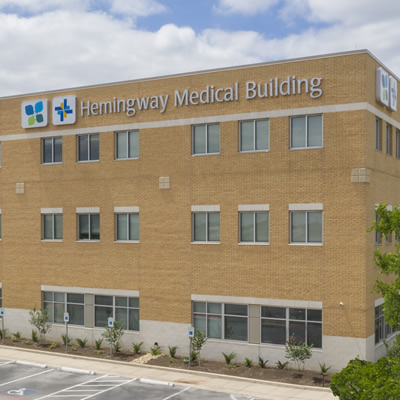
Baylor Scott & White Specialty Clinic - Killeen Hemingway
2405 S Clear Creek Rd , Killeen, TX, 76549- Monday: 8:00 am - 5:00 pm
- Tuesday: 8:00 am - 5:00 pm
- Wednesday: 8:00 am - 5:00 pm
- Thursday: 8:00 am - 5:00 pm
- Friday: 8:00 am - 5:00 pm
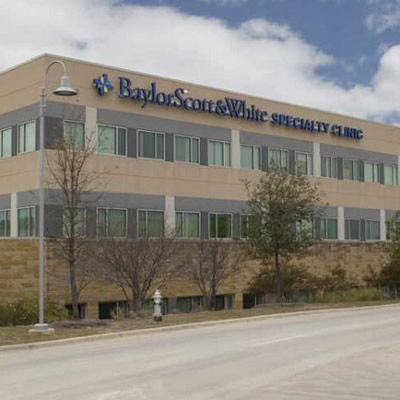
Baylor Scott & White Specialty Clinic - Lakeway
200 Medical Pkwy , Lakeway, TX, 78738- Monday: 8:00 am - 5:00 pm
- Tuesday: 8:00 am - 5:00 pm
- Wednesday: 8:00 am - 5:00 pm
- Thursday: 8:00 am - 5:00 pm
- Friday: 8:00 am - 5:00 pm

Baylor Scott & White Specialty Clinic - Marble Falls
800 W State Hwy 71 , Marble Falls, TX, 78654- Monday: 8:00 am - 5:30 pm
- Tuesday: 8:00 am - 5:30 pm
- Wednesday: 8:00 am - 5:30 pm
- Thursday: 8:00 am - 5:30 pm
- Friday: 8:00 am - 5:30 pm

Baylor Scott & White Specialty Clinic - Salado
213 Millcreek Dr Ste 190, Salado, TX, 76571- Monday: 8:00 am - 5:00 pm
- Tuesday: 8:00 am - 5:00 pm
- Wednesday: 8:00 am - 5:00 pm
- Thursday: 8:00 am - 5:00 pm
- Friday: 8:00 am - 5:00 pm

Baylor Scott & White Surgicare - Dallas
4020 Junius St , Dallas, TX, 75246- Monday: 6:00 am - 5:00 pm
- Tuesday: 6:00 am - 5:00 pm
- Wednesday: 6:00 am - 5:00 pm
- Thursday: 6:00 am - 5:00 pm
- Friday: 6:00 am - 5:00 pm

Baylor Scott & White Surgicare - Garland
530 Clara Barton Blvd Ste 100, Garland, TX, 75042- Monday: 6:00 am - 5:00 pm
- Tuesday: 6:00 am - 5:00 pm
- Wednesday: 6:00 am - 5:00 pm
- Thursday: 6:00 am - 5:00 pm
- Friday: 6:00 am - 5:00 pm

Baylor Scott & White Women's Health Group
3600 Gaston Ave Wadley Tower, Ste 1158, Dallas, TX, 75246- Monday: 9:00 am - 5:00 pm
- Tuesday: 9:00 am - 5:00 pm
- Wednesday: 9:00 am - 5:00 pm
- Thursday: 9:00 am - 5:00 pm
- Friday: 9:00 am - 4:30 pm

Baylor Scott & White Women’s Health Specialists - Waxahachie
2460 N Interstate 35E Ste 165, Waxahachie, TX, 75165- Monday: 8:00 am - 5:00 pm
- Tuesday: 8:00 am - 5:00 pm
- Wednesday: 8:00 am - 5:00 pm
- Thursday: 8:00 am - 5:00 pm
- Friday: 8:00 am - 5:00 pm
